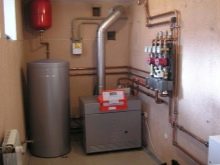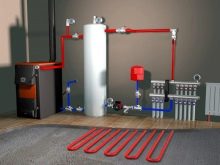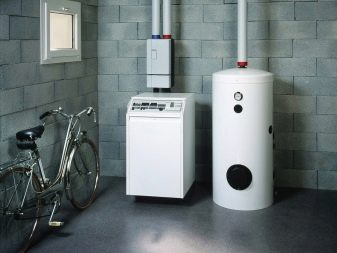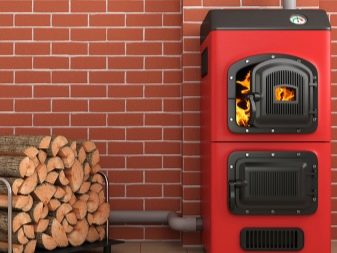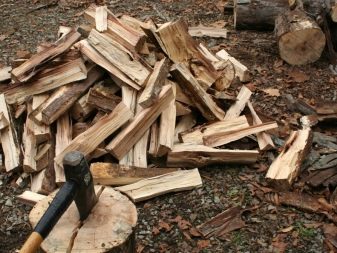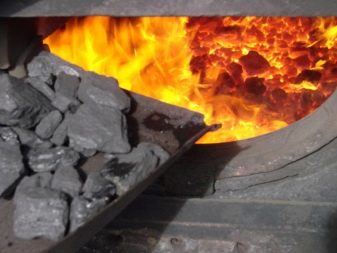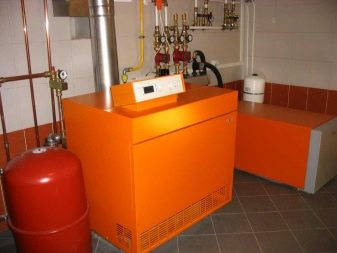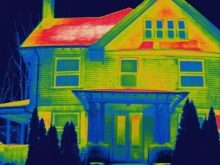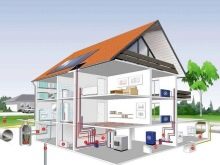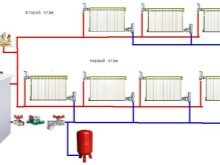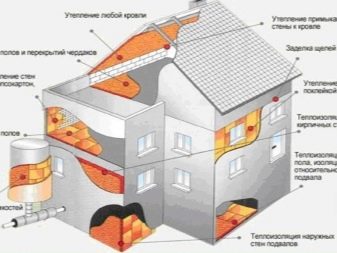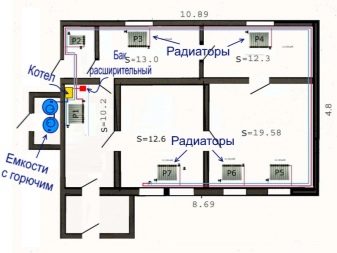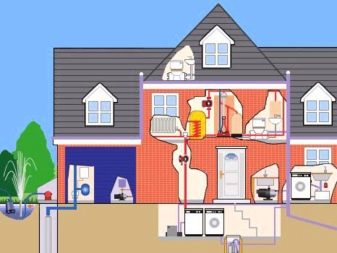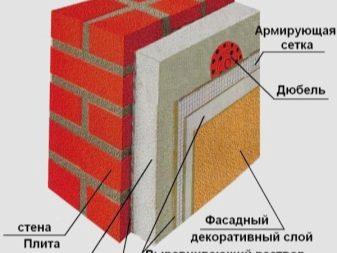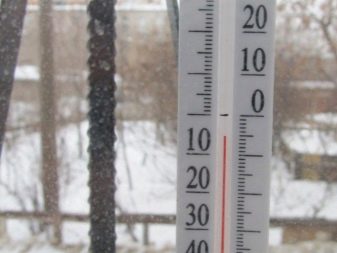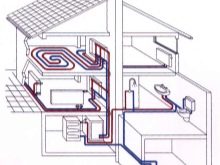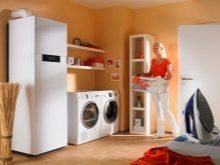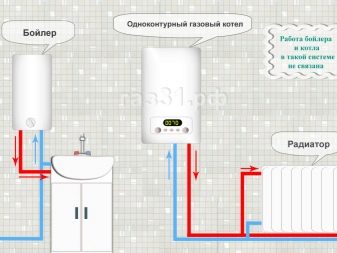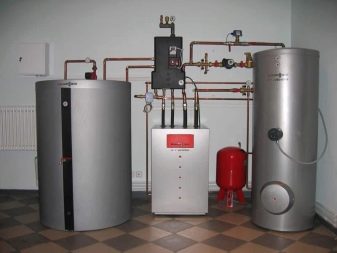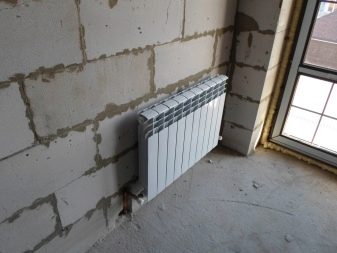Subtleties of the heating calculation process
Creating a heating system in your home is very important. It would be very unwise to get a boiler with the equipment, not taking into account all the features of your home. Here it is possible to meet either with the fact that its capacity will be insufficient - the equipment will have to work "to the fullest", without making interruptions in work, and the expected result will not be achieved, or you can buy too expensive device, so you can not use all resources.
When choosing a boiler, you need to remember that it will affect many nuances, perhaps even the location of the rooms.
According to the type of resources consumed by boilers, they are divided into types:
- electric;
- solid fuel;
- on liquid fuel;
- gas.
Electricity is not cheap, for this reason electric boilers are not very popular.As everyone knows, in the countryside there are often accidents leading to long pauses in its supply. This negatively affects the state of housing and household outbuildings, since during the winter period in Russia any break in heating can lead to the most dire consequences.
Solid fuel unit can use the most different fuel.
You can drown it:
- in coal;
- firewood;
- fragments of wooden pallets;
- briquettes from wood waste.
Each type of fuel has a different heat transfer capacity, but this inconvenience is more than compensated by their availability.
Oil-fired boilers “feed on” either diesel fuel or used engine oil. High-performance, but not common in the private sector due to the high prices of diesel fuel and the lack of specialized areas for its storage. The advantage of this type is a promising connection to the gas supply. It is produced by simple replacement of the burner.
Gas boiler - the most popular type in our days because of the relative cheapness of fuel, small size and ease of operation.
It is not enough to buy the right equipment - you need to correctly calculate its power and distribute heating devices.Of course, an ideal solution to the problem would be to carry out such calculations by specialists, but this option is quite expensive. Therefore, you can try to do it yourself.
Special features
Calculating the number of calories of thermal energy in compliance with the standard per unit area is very important, since subsequently the comfort of being in residential premises will depend on this.
Let's try to figure out how to calculate the number of calories produced by the heating system:
- At the first stage, heat loss to the building is calculated - this is needed to determine the power of the heating boilers and each radiator. Calculate them for each room that has an outer wall.
- Then follows the choice of temperature. It is usually calculated using values 75-65-20 in accordance with EN442. Most of the heating equipment produced outside of the Russian Federation is tuned to it.
- Selecting the power of heating devices, take into account the resulting internal heat loss.
- Calculations of hydraulics produced for known data on pipes and circulation pumps.
- When choosing a boiler, the calculation of the volume of the heating system takes place, since the capacity of the heating networks directly affects the volume of expansion tanks.
What does it depend on?
Buildings tend to lose temperature due to the difference between the internal and external temperature of air masses. Heat loss increases with increasing area of windows, roofs, foundations. It is also related to the material of which windows and doors are made and what size they are.
The main purpose of measures for calculating the use of boilers is to choose the right heating device.which will be capable of recovering heat losses at low temperatures or extreme frosts.
With the same thickness of wooden and brick walls, they have different intensity of thermal conductivity. - the heat loss of the wood structure is less, respectively, there will be less consumption from heat sources. The internal temperature of the housing always depends on the state of the air environment. So, a wall, a window opening, a door, a roof in winter release the accumulated heat and vice versa, allow cooled air masses to get inside.The constant load of the boiler with the loss of calories in the cold season is easily recorded with a thermal imager. As a rule, it goes through the ventilation and sewage systems. When building heat loss is calculated, such data are usually not recorded. Although to include heat losses through ventilation and sewer systems into the picture of the general thermal calculations of a building is a sure way out of the situation.
Significant reduction of heat losses occurring with the help of building structures, door / window openings, possibly with the help of a well-designed insulation system. It is impossible to perform calculations for the autonomous heating circuit of a country house, not taking into account the heat loss of walls, window openings, doors, roofs, foundations. Rather, it will be impossible to perform power calculations of the heating unit, corresponding to warming the cottage at the most unexpected and significant drop in the outside air temperature.
It is fair to say that the more energy-efficient the building, the less money will be spent on gas (gasoline / diesel fuel and the like).With the correct installation of the circuits with the boiler will also be required thermal conductivity coefficients (hereinafter - λ,) building materials.
How to calculate?
For example, take a standard building: a “box” of square shape with facades of 12 m and 7 m in height; 16 wall openings of 2.5 m2; brick facade with a wall thickness of two bricks.
To determine the index of resistance to heat transfer, there is a formula - for the facade it is necessary to divide the wall thickness by λ. To calculate the figures accurately, it will be necessary to know the λ of the material used in the construction. If brick walls have λ equal to 0.56 W / m / degree Celsius with a thickness of 0.51 m, then it turns out that the heat transfer will be equal to 0.51 / 0.56 = 0.91 W / m2 × degree Celsius. Results need to be rounded.
You must specify that the openings of windows and doors occupy 40 m2 of the area of the walls. If it is necessary to calculate the heat loss of buildings or energy-efficient houses, this coefficient for enclosing structures will be correct. For buildings with a height of not more than two, which was built from standard materials, you can not count heat loss on doors and windows, that is, do not subtract their footage from the total footage of the facades.
To find out heat loss 1 square.m. walls, if the temperature difference inside and outside is 1 degree Celsius, it is necessary to divide 1 by the heat transfer resistance of walls calculated above: 1: 0.91 = 1.09 W / m2 · 0С. Now, having received a heat loss of 1 m2, they determine the heat loss by measuring the specific temperature outside. For example, at 20 degrees above zero inside and outside 17 degrees below zero, a temperature difference is obtained (20 + 17 = 37 degrees). Under these conditions, the total heat loss of such a cottage will be: 0.91 · 336 · 37 = 11313 W.
λ of heat-insulating materials of external walls for arranging and installing floor screeds and during leveling is calculated by converting heat losses to kW / h, which is easier to perceive.
Heat loss can be calculated in a similar way: 11313 λ (heat losses that were obtained as a result of the calculations above) · 1h: 1000 W = 11.313 kW / h.
To calculate heat losses in 24 hours, the obtained values of heat loss in 1 hour must be multiplied by 24: 11.313 · 24 = 271.512 kW / h. You can give an example of heat loss for 7 months (this is the approximate duration of the heating season in our latitudes): 7 · 30 days · 271.512 (calculated heat loss per day) = 57017.52 kW / h.
Calculation of heat loss of ventilation in the season when the building is heated can be made by calculating the square building with a wall height of 7 meters and 12 meters in width.If you do not take into account the volumes of objects inside and partitions, calculate the volume of internal air in such a cottage: 12 · 12 · 7 = 1008 m3. Thus, taking the temperature at + 20 degrees Celsius for the average under heating conditions, its density (p) will be 1.2047 kg / m3, and the specific heat capacity is determined at 1.005 kJ / (kg · degree Celsius). Accordingly, the internal mass of air will be equal to: 1008 · 1.2047 = 1214.34 kg. It can be assumed that the change in internal air volume will occur 5 times. It should be noted the dependence of the number of changes in air volume on the need for inflow from the number of people living in the cottage.
Now, when the amount of heat spent for heating the internal air volume during a five-time exchange using the inflow system has been clarified, it is possible to find out the heat loss of 7-month heating “in the air”: 7 months · 30 days · 45.66 = 9609.6 kW / h.
Unfortunately, in our latitudes to spend heat on heating ventilation (the so-called "infiltration costs") is necessary for a full existence. It is necessary to perform calculations for heating the supply air, add them to the heat losses, and this must be remembered when there will be a choice of heating system with a boiler.
Thermal energy can go on heating sewer and hot water. In summer, the water usually heats up on its own; in the winter, it is no more than +5 degrees. It is impossible to bathe, take a shower, wash dishes or wash with cold water only. Even the water that is in the toilet tank, gives off heat when the walls come into contact with the air and takes a certain amount of positive temperature. Water that is heated by gas is also wasted in meeting domestic needs, as it is drained into sewer pipes.
Example: when calculating for a family of 3 persons, 17 m3 of water is consumed every month. Р of water = 1000 kg / cub.m, 4.183 kJ / kg · degree Celsius - is its specific heat capacity. If we take the average temperature of hot water to meet domestic needs as +40 degrees Celsius, then the temperature difference between the incoming volume not heated (+5 degrees) and heated (+30 degrees) will be 25 degrees Celsius.
To calculate the sewer heat loss, you need: 17 · 1000 (its density) · 25 · 4.183 = 1777775 kJ. When converting kilojoules to kWh: 1777775: 3600 = 493.82 kW / h. Accordingly, for seven months 493.82 · 7 = 3456.74 kW of heat flow to sewer pipes.
It should be noted a relatively small amount of heat consumption for heating water for hygiene in comparison with the loss of calories in external walls and ventilation losses. One way or another, these energy losses are also energy inputs that load heating networks and cause increased gas costs.
The boiler is used in case of reimbursement of heat loss structures. If a heating system with two circuits is used, or the boiler is equipped with an indirect heating boiler that is used when heating water intended for washing and showering, then calculating the heat loss in 24 hours and the flow of hot water "into discharge", it is possible to determine the required power of the boilers for areas with known by the meter.
In connection with the design, a single-circuit boiler is exclusively to raise the temperature of the coolant in the heating system. To determine its heating capacity, it is necessary to calculate the cost of heat energy by the facades of the object and the heating of the replaced internal volume of air at home.
The required heat losses in kW / h every 24 hours are calculated according to the following example: 271.512 + 45.76 (heat losses due to heating of incoming air masses per day) = 317.272 kW / h. From here you need a boiler 317.272: 24 = 13.22 kW.Under all conditions, this type of boiler will be in active action, which will necessarily reduce the time of its operation. It is believed that when the temperature drops below the minimum (which is often enough), its calculated power will be insufficient, as large temperature differences between the outer and inner surface will occur. walls and heat loss of the object will increase dramatically. Because of this, the heating device, which was chosen taking into account the averaged calculations of heat and power consumption, will most likely not cope with greatly lowered temperatures outside. Here a rational idea could be to increase the power of the boiler unit by one fifth: 13.22 · 0.2 + 13.22 = 15.86 kW.
To calculate the power of the second circuit, which heats water for domestic needs, divide the heat consumption per month with "sewer" heat loss for 30 days and per day (24 hours): 493.82: 30: 24 = 0.68 kW. From here, the power of the boiler unit is obtained, approximately equal to 15.86 kW in the circuit used for the heating system, and 0.68 kW in the heating circuit.
Tips
When making calculations of high-quality and efficient heating, providing constant heat to any private houses or shopping centers, you should not try to save money when you buy radiators.
The best option would be to purchase anodized or even vacuum batteries. Any such device is perfectly protected from the appearance of rust, respectively, will be operated for at least twenty to thirty years. According to the instructions, such equipment is equipped with a heat transfer capacity of at least 220 watts. I must say that the vacuum heating radiator is the last word in the improvement of heating systems as the most economical in comparison with all types of modern radiators. It is universal when choosing installation sites and can be mounted both in residential and commercial areas.
Enlarged quality and efficiency are those radiators that are made of non-ferrous metals. To date, a large variety of heating equipment made of aluminum and copper and their alloys with a variety of indicators of power and dimensions is presented in retail chains. To create a specific design, they make vertically directed radiators that fit well with the limited amount of space designed for them.
The calculation of heating power for private houses does not constitute any difficulties and is carried out taking into account the income of Gcal (gigacalories) and heat consumption. For all the examples mentioned above, a large number of parameters are not required, which allows for a quick and accurate calculation.
According to the recommendations of experts, the radiator is optimally placed under the window sill to prevent most of the cooled air from entering the room.
How to calculate the heating system, see the following video.

